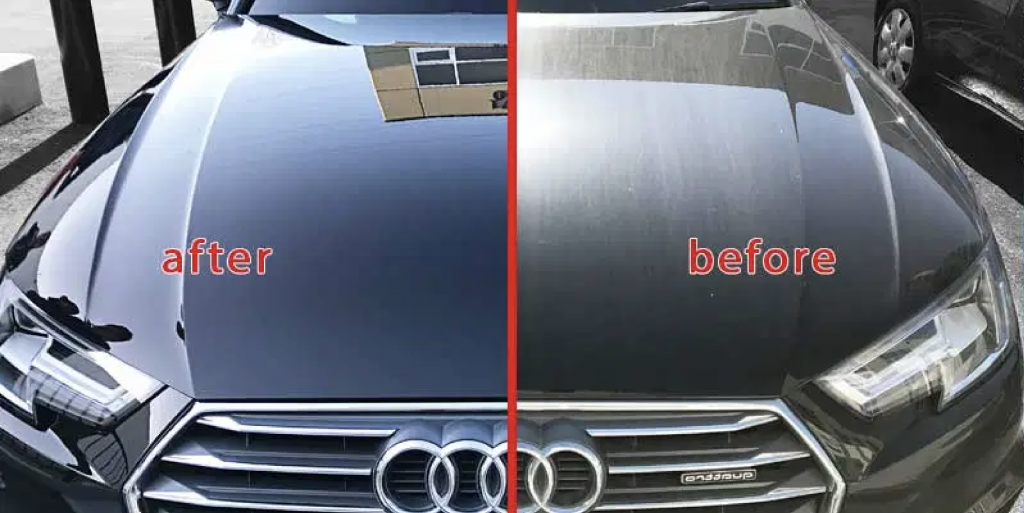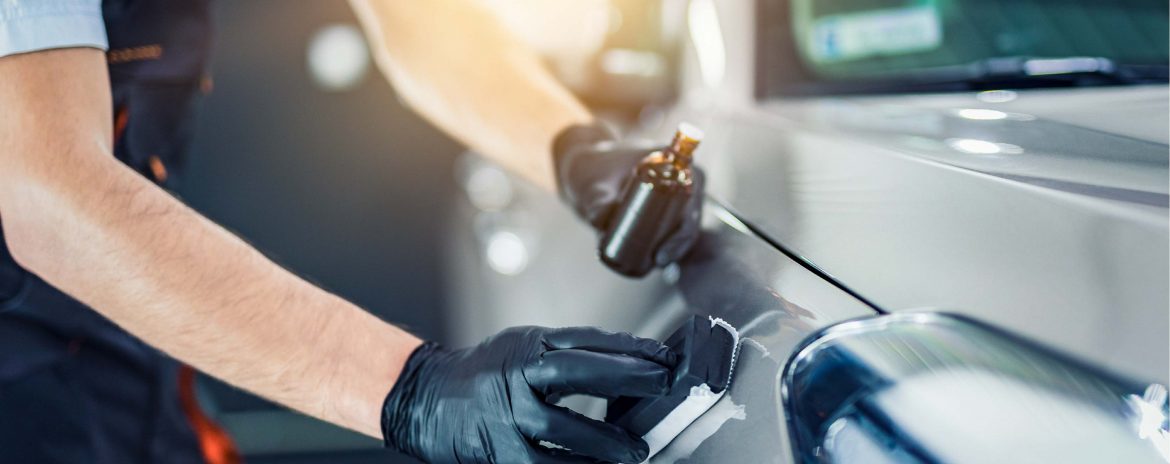Maintain Your Vehicle Investment with Conforti Auto and Marine Detailing Ceramic Coating
Maintain Your Vehicle Investment with Conforti Auto and Marine Detailing Ceramic Coating
Blog Article
Exactly How Outlining Porcelain Finishing Enhances the Longevity of Your Automobile's Paint
Ceramic layer has arised as an essential modern technology in vehicle outlining, using a durable option for maintaining the stability of your vehicle's paint. Understanding the intricacies of just how ceramic covering jobs and its benefits over conventional wax can supply valuable insights for vehicle owners.
What Is Ceramic Layer?
Recognizing the safety advantages of ceramic layer begins with acknowledging its structure and capability. Ceramic finishing is a liquid polymer related to the external surfaces of vehicles, primarily designed to improve and safeguard auto paint. The crucial component of this finishing is silicon dioxide (SiO2), which is obtained from all-natural materials like sand. This compound develops a strong chemical bond with the manufacturing facility paint, producing a safety layer that is both sturdy and hydrophobic.
The finish's application includes meticulous prep work of the automobile's surface area, which must be without pollutants, scratches, and imperfections to ensure optimal bond. As soon as applied, the ceramic finish treatments to form a rigid guard that can endure different environmental factors, consisting of UV rays, chemical discolorations, and oxidation.
In addition, ceramic finishings are not merely surface-level treatments; they pass through the paint to offer an enduring defense. This capability prolongs the lifespan of the vehicle's aesthetics while keeping its value gradually. Comprehending these fundamental aspects of ceramic coating is important for cars and truck proprietors looking for efficient remedies for paint conservation and improvement.
Advantages of Ceramic Coating
The benefits of ceramic coating extend much past its fundamental safety features. Unlike traditional wax or sealants, ceramic finishes create a strong bond with the car's paint, permitting it to withstand environmental hazards such as UV rays, acid rainfall, and road salt.
In addition, ceramic coatings provide hydrophobic homes, suggesting they ward off water and contaminants. This characteristic not just makes the automobile easier to tidy yet likewise decreases the frequency of cleaning, conserving both time and effort for vehicle proprietors. The glossy surface developed by the finishing prevents dust and crud from sticking, boosting the automobile's total sanitation.
In addition, ceramic finishes improve the deepness and clearness of the paint, giving lorries a glossy surface that is visually striking. This visual improvement even more adds to maintaining the automobile's resale value, as a well-maintained exterior is a major selling factor for possible buyers. On the whole, the advantages of ceramic layer make it a beneficial investment for any individual wanting to safeguard and boost their automobile's paintwork.
Exactly How Ceramic Finishing Functions

The layer's hydrophobic homes push back water and dirt, preventing the buildup of grime externally. This not only makes the auto easier to clean however additionally reduces the likelihood of scratches and swirl marks caused by typical washing techniques. The ceramic layer acts as a guard against UV rays, which can cause fading and oxidation over time.
As soon as treated, the coating exhibits impressive resistance to chemicals, consisting of road salts, bird droppings, and tree sap, which can or else damage the paint. The durability of ceramic coverings can last for a number of years, depending on aspects such as upkeep and environmental conditions. In general, the chemical bonding procedure of ceramic coverings provides a robust protection that keeps the honesty and look of an automobile's paintwork.
Comparing Ceramic Finishing to Wax
Comparing ceramic covering to conventional wax reveals significant differences in performance and longevity. While both items intend to secure an automobile's paint, their structures and toughness set them apart. Wax, normally made from all-natural carnauba or synthetic products, provides a short-term shield that typically lasts just a few weeks to a couple of months, depending on environmental problems and maintenance regimens.
On the other hand, ceramic coverings are sophisticated options made up of inorganic products that bond chemically with the lorry's paint. This produces a durable, semi-permanent layer of defense that can sustain for several years. Therefore, ceramic coatings provide premium resistance to UV rays, chemical discolorations, and physical abrasion, considerably lowering the risk of oxidation and fading.
Furthermore, the hydrophobic residential or commercial properties of ceramic coverings make sure that water grains up and rolls off the surface, making it a lot more difficult for dirt and grime to stick. This ease of cleansing is a significant benefit over wax, which can attract dirt and need constant reapplication. Inevitably, for vehicle proprietors looking for lasting protection and boosted visual appeal, ceramic finishings offer a much more efficient choice to standard wax items.
Maintenance Tips for Long Life
Proper upkeep basics is vital for taking full advantage of the longevity of a ceramic covering. Make use of a pH-balanced car shampoo to stop deteriorating the finishing, and avoid automatic auto washes with harsh brushes that can create micro-scratches.
To maintain the hydrophobic residential or commercial properties of the ceramic finish, take into consideration using an upkeep spray or booster especially made for ceramic layers every couple of months. This will reinforce the safety layer and improve water beading.
Furthermore, stay clear of revealing the layered surface area to severe ecological conditions whenever possible. Car parking in shaded areas or making use of a cars and truck cover can prevent UV damage and contamination from bird droppings, tree sap, or industrial after effects.
Lastly, check the covering periodically for signs of wear or damage. If you discover a reduction in hydrophobic habits, it might be time for an expert reapplication. By adhering to these upkeep pointers, car owners can significantly prolong the life and effectiveness of their ceramic covering, guaranteeing that their vehicle's paint remains safeguarded and aesthetically appealing for several years to come.
Final Thought

Report this page